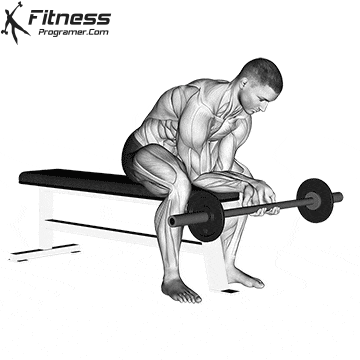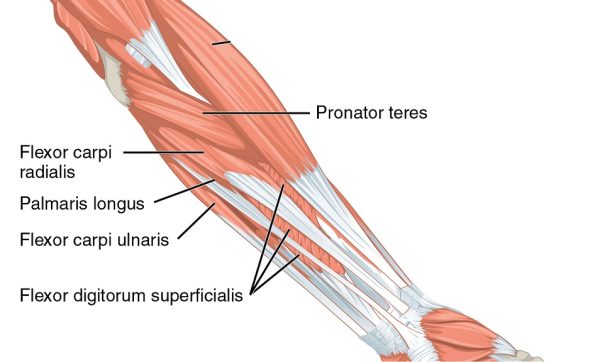Overview
The barbell finger curl is a wrist and finger flexion exercise performed by letting the barbell roll down the fingers and curling it back up using the hand and finger muscles. In the seated version, you rest your forearms on your thighs with palms facing up, allowing for a controlled, isolated contraction of the flexor digitorum muscles. This exercise, which is frequently used to increase grip strength, is especially beneficial for weightlifters, rock climbers and athletes who want to strengthen their forearm muscles.
How to perform Seated Barbell Finger Curl

Sit on a flat bench with your feet flat on the floor and knees bent to 90 degrees.
Hold a barbell with an underhand grip (palms up), hands shoulder-width apart.
Rest your forearms on your thighs so that your wrists hang just past your knees.
Let the bar slowly roll down your fingers toward the fingertips.
Curl the barbell back up by flexing your fingers and squeezing tightly at the top.
Perform for 10–15 slow, controlled reps, focusing on the contraction in the forearms.
Tips for Proper Form
Use a light to moderate weight to avoid overloading delicate finger joints.
Keep your forearms flat and stable against your thighs throughout the movement.
Move slowly through the entire range of motion—no jerking.
Squeeze hard at the top for maximum muscle activation.
Breathe consistently, exhaling as you curl and inhaling as you release.
Common Mistakes
Using excessive weight, which can strain the fingers and limit range of motion.
Lifting the forearms off the thighs, reducing isolation.
Performing fast or jerky reps, decreasing muscle control.
Not allowing the bar to roll fully, which limits the effectiveness of the stretch phase.
Neglecting the squeeze at the top, which minimizes muscular engagement.
Benefits of the Seated Barbell Finger Curl
Strengthens Finger Flexors: Directly targets the muscles that control finger and hand strength.
Improves Grip Endurance: Helps prevent grip fatigue during heavy lifts or extended holds.
Supports Lifting Performance: Enhances bar control during deadlifts, rows, and cleans.
Reduces Risk of Tendon Injuries: Conditions the small muscles and tendons of the forearms and hands.
Great for Climbing and Sports: Increases functional grip strength for rock climbing, martial arts, and racquet sports.
Accessible and Minimal Setup: Requires only a barbell and bench—ideal for any gym setting.
Balances Forearm Training: Complements wrist curls and reverse curls for complete forearm development.
How to Incorporate Into Your Routine
- For Beginners: Perform 2–3 sets of 10–12 reps with a light barbell to focus on control and form.
- For Grip Strength: Use 3–4 sets of 8–10 reps with heavier load and full range of motion.
- For Hypertrophy: Add to your forearm day or upper body session, aiming for 10–15 reps to fatigue.
- For General Fitness: Include once a week to strengthen grip for daily activities.
- For Recovery or Rehab: Use ultra-light weight to condition and rehab finger tendons.
Muscles Worked

Frequently Asked Questions
Can I do this with dumbbells instead of a barbell?
Yes, but the barbell ensures even resistance across both hands and allows for smoother rolling.
Is this exercise good for climbers?
Absolutely. It builds the finger and forearm endurance climbers need for sustained holds.
What’s the difference between wrist curls and finger curls?
Wrist curls focus on wrist flexion. Finger curls emphasize finger joint movement and grip strength.
Can it help with deadlift grip?
Yes. Stronger fingers mean better bar control, especially in mixed or hook grip styles.
How often should I train finger curls?
1–2 times per week is sufficient for strength and development without overtraining small tendons.
